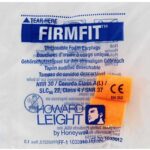With the introduction of the Omnibus Agreement for Unpaid Post-Secondary Student Placements, Toronto Paramedic Services staff are no longer required to complete and submit a QuatroSafety report (WSIB Form 7) for student injury and illness. Per this agreement, the college assumes the role of “placement employer” in the event of a WSIB claim and thus is responsible for injury and illness reporting.
In the event of a paramedic student injury or illness, please ensure the following actions are completed:
- Ensure the student receives first aid/medical attention as required.
- Conduct any required actions as you would for an injury scene (e.g., site security, preservation, etc.).
- Document the circumstances of the injury or illness, including incident events, witnesses, observations, etc. Immediately send this information to Education & Development at paramedic.placements@toronto.ca and psedu@toronto.ca for college notification and action.
- Contact the on-duty Clinical Superintendent (416-392 3000 option 8, selection 1) for assistance if required.
In the event of a critical injury, please follow the process of notifying the Deputy Commander of the injury or illness.
If you have any questions, please email paramedic.placements@toronto.ca.
(Original signed by)
April Hugh


 Comprehensive instructions and a reference video can be found
Comprehensive instructions and a reference video can be found 


 Removing the Earplugs
Removing the Earplugs
You must be logged in to post a comment.